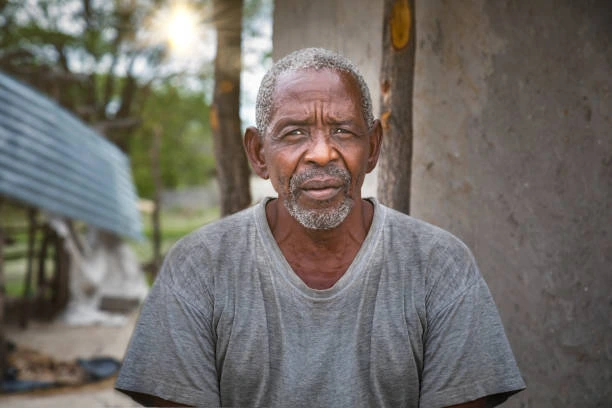Author's details
- Dr. Khashau Eleburuike
- MBBS (Ilorin) MSc. Global Health Karolinska Institute.
- Resident doctor in family medicine in Northern Sweden.
Reviewer's details
- Dr Abdulgafar Lekan Olawumi
- MBBS, MHE, MPH, FWACP, FMCFM
- Department of Family Medicine and Geriatric Centre of Aminu Kano Teaching Hospital Kano, Nigeria.

- Date Published: 2025-04-19
- Date Updated: 2025-04-19
Malnutrition in Older Adults in Sub-Saharan Africa
What is Malnutrition?
Malnutrition means not getting enough of the right nutrients; whether from too little food, poor-quality food, or the body not absorbing nutrients well. In older adults, malnutrition is a serious health problem that can lead to weakness, illness, and poor quality of life.
In Sub-Saharan Africa, many older people live in poverty, rural areas, or extended families where resources are stretched. They may be overlooked during food distributions or depend on others for meals. In African culture, older adults often prioritize the nourishment of their children and grandchildren above their own.
Look out for:
- Noticeable unintended weight loss
- Weaknesses or feeling tired all the time
- Poor wound healing
- Loss of appetite
- Loose or missing teeth, making chewing difficult
- Swelling in the legs (can be from protein deficiency)
- Confusion or frequent illness
- Dry, thin and weak hair and skin
- Low income or food insecurity
- Dental problems (missing teeth, gum pain)
- Chronic diseases like diabetes, TB, or HIV
- Swallowing problems
- Loneliness or depression
- Limited access to diverse, nutritious foods
- Traditional beliefs that discourage older adults from eating certain foods
Elderly people need:
- High-quality protein (beans, eggs, meat, fish, groundnuts)
- Vitamins and minerals (from fruits and vegetables)
- Plenty of fluids (especially clean drinking water)
- Energy foods (like maize, cassava, yams, or rice)
Even small, frequent meals are better than none.
At Home:
- Encourage eating small meals often
- Use local, affordable ingredients (e.g. moringa, groundnuts, locust beans, beans, soya beans, meat, fish, sweet potatoes)
- Offer soft or mashed foods if chewing is difficult
- Help them eat if they have weaknesses or tremors
- Make meal -times social and relaxed.
At Clinics or Hospitals:
- Screen regularly for signs of undernutrition
- Check weight, appetite, and strength
- Provide nutrition counselling
- Refer to dietitians or nutritionists if available
- Treat any underlying conditions (like infections or mouth pain or problems)
- Don’t assume elders eat last or less—include them in meal planning
- Watch for signs of food neglect or isolation
- Share knowledge about affordable nutritious options
- Encourage intergenerational support (grandchildren helping grandparents)
🗣️ Older adults need good nutrition to stay strong, prevent disease, and live with dignity. With small actions and family care, malnutrition can be prevented and treated.
- World Health Organization. (2015). World Report on Ageing and Health. https://www.who.int
- Charlton, K. E., & Russell, J. (2007). Nutrition in older adults in Africa: the forgotten issue. South African Journal of Clinical Nutrition, 20(4), 132–135.
- HelpAge International. (2020). Nutrition and ageing in Africa. https://www.helpage.org
- de Jager, L. S. et al. (2017). Determinants of malnutrition in older people in Sub-Saharan Africa. Public Health Nutrition, 20(12), 2230–2238.
- FAO. (2019). The State of Food Security and Nutrition in the World. http://www.fao.org
